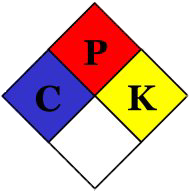alysis final.jpg)
Electrocatalytic Reduction of CO2
The electrocatalytic generation of energy dense liquid fuels to replace rapidly depleting petrochemical sources is attractive because it could represent a way not only to mitigate environmental impact, but also to generate chemically useful molecules from light. As a result, the electrochemical reduction of CO2 either directly into liquid fuels or into intermediates that can be further converted into liquid fuels is a major research effort in our lab. Our approach focuses on the optimization of transition metal molecular electrocatalysts through synthetic modification to enhance the properties required for the efficient conversion of CO2 to molecules of interest. A parallel area of study is the characterization of the mechanistic aspects relevant CO2 reduction and the development of new and more efficient catalytic systems.
Further Reading:
Benson, E. E.; Sathrum, A. J.; Smieja, J. S.; Kubiak, C. P. Electrocatalytic and homogeneous approaches to conversion of CO2 to liquid fuels. Chem. Soc. Rev., 2009, 38, 89-99.
Smieja, J. M.; Kubiak, C.P. Re(bipy-tBu)(CO)3Cl – Improved Catalytic Activity for Reduction of Carbon Dioxide. IR-Spectroelectrochemical and Mechanistic Studies. Inorg. Chem., 2010, 49, 9283-9289.
Sathrum, A. J.; Kubiak, C. P. Kinetics and Limiting Current Densities of Homogeneous and Heterogeneous Electrocatalysts. J. Phys. Chem. Lett., 2011, 2 (18), 2372-2379.
In the reduction of CO2, large kinetic barriers may be mitigated by electrocatalysts that create alternate pathways toward reduction products. In particular, semiconductor photoelectrodes may be used to ease the applied potential requirements in these catalytic systems with illumination. In an example system, the creation of a heterojunction between a semiconductor surface such as p-type silicon and an active solution spontaneously generates an inherent resting potential. Under illumination, this potential can act as both a charge separator to shuttle electrons to the electrode surface and as a source of photovoltage that cumulatively adds to the applied potential. The end result of such a system is a reduced energy requirement for catalysis to occur. Of note is that photoelectrodes of this type may either be used as catalysts for the direct reduction of CO2 or as reductants of molecular catalysts. Our approach is to combine our optimized molecular catalytic systems with electrodes by either direct surface attachment to the photoelectrodes or interfacing the photoelectrodes with molecules in solution to maximize these effects.
Further Reading:
Kumar, B.; Llorente, M.; Froehlich, J.; Dang, T.; Sathrum, A.; Kubiak, C. P. Photochemical and Photoelectrochemical Reduction of CO2. Annu. Rev. Phys. Chem., 2012, 63, 541-569.
Smieja, J.M.; Benson, E.E.; Kumar, B.; Grice, K.A.; Seu, C.S.; Miller, A.J.M.; Mayer, J.M; Kubiak, C.P. Kinetic and Structural Studies, Origins of Selectivity, and Interfacial Charge Transfer in the Artificial Photosynthesis of CO. Proc. Nat. Acad. Sci., 2012, 109 (39), 15646-15650.
Kumar, B.; Beyler, M.; Kubiak, C. P.; Ott, S. Photoelectrochemical Hydrogen Generation by an [FeFe] Hydrogenase Active Site Mimic at p-Type Silican/Molecular Catalyst Junction. Chem. Eur. J., 2012, 18 (5), 1295-1298.
We study mixed-valence inorganic systems, which have been shown to display the effects of electron dynamics on the picosecond timescale. Through synthetic and environmental modifications, we characterize the behavior of the relevant vibrational modes within these systems, assigning their localized and delocalized behaviors at the borderline of Class II/III systems. We have employed theoretical modeling of donor-bridge-acceptor complexes to identify two intervalence charge-transfer bands, metal-to-metal and metal-to-bridge in character, helping to expand our understanding of related systems. Our library of relevant complexes includes nanoparticle- and hydrogen-bonded systems, which allow for the exploration of new types of supramolecular mixed-valence complexes, molecular assemblies which incorporate nanoscale structures, and the hardening of otherwise soft molecular interactions (hydrogen-bonds). This has allowed us to make significant contributions to the understanding of the mechanics of molecular scale electron transfer and also has implications for the development of molecular electronic devices.
Further Reading:
Kubiak, C.P. Inorganic Electron Transfer: Sharpening a Fuzzy Border in Mixed Valency and Extending Mixed Valency across Supramolecular Systems. Inorg. Chem., 2013, 52 (10), 5663-5676.
Glover, S. D.; Kubiak, C. P. Persistence of the Three-State Description of Mixed Valency at the Localized-to-Delocalized Transition. J. Am. Chem. Soc., 2011, 133, 8721-8731.
Glover, S. D.; Goeltz, J.C.; Lear, B. J.; Kubiak, C.P. Inter- or Intramolecular Electron Transfer Between Triruthenium Clusters: We'll Cross that Bridge When We Come to It. Coord. Chem. Rev., 2010, 254, 331-345.
Ito, T.; Hamaguchi, T.; Nagino, H.; Yamaguchi, T.; Washington, J., Kubiak, C.P. Effects of Rapid Intramolecular Electron Transfer on Vibrational Spectra. Science, 1997, 277, 660-663.


